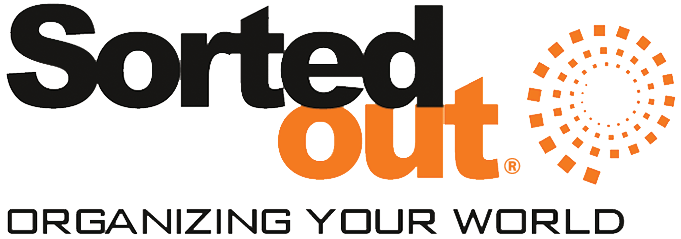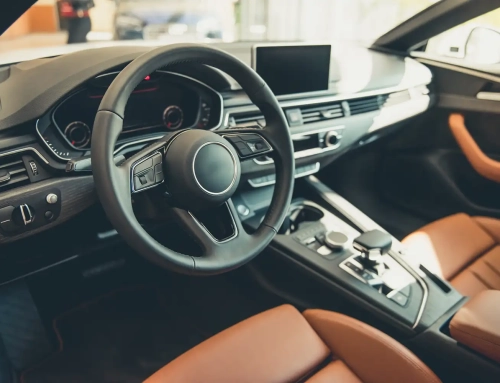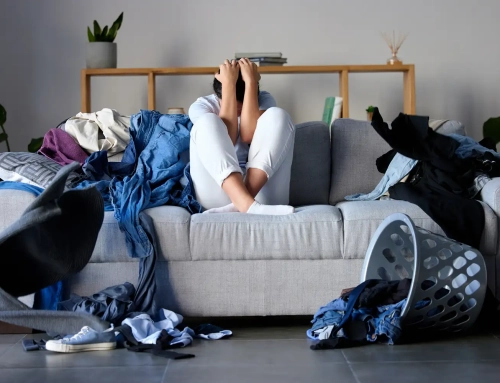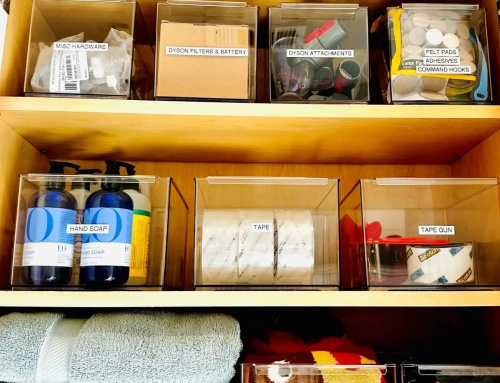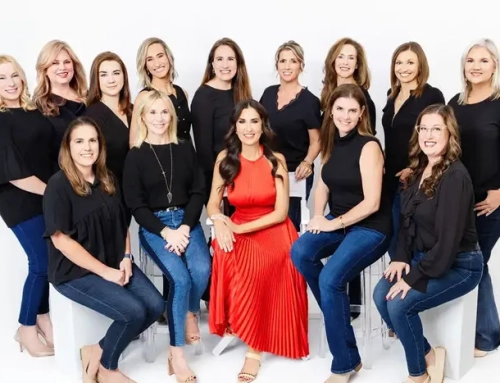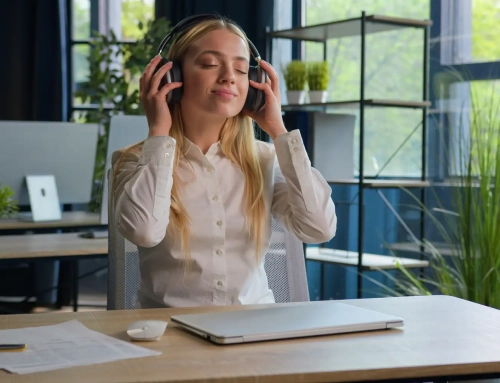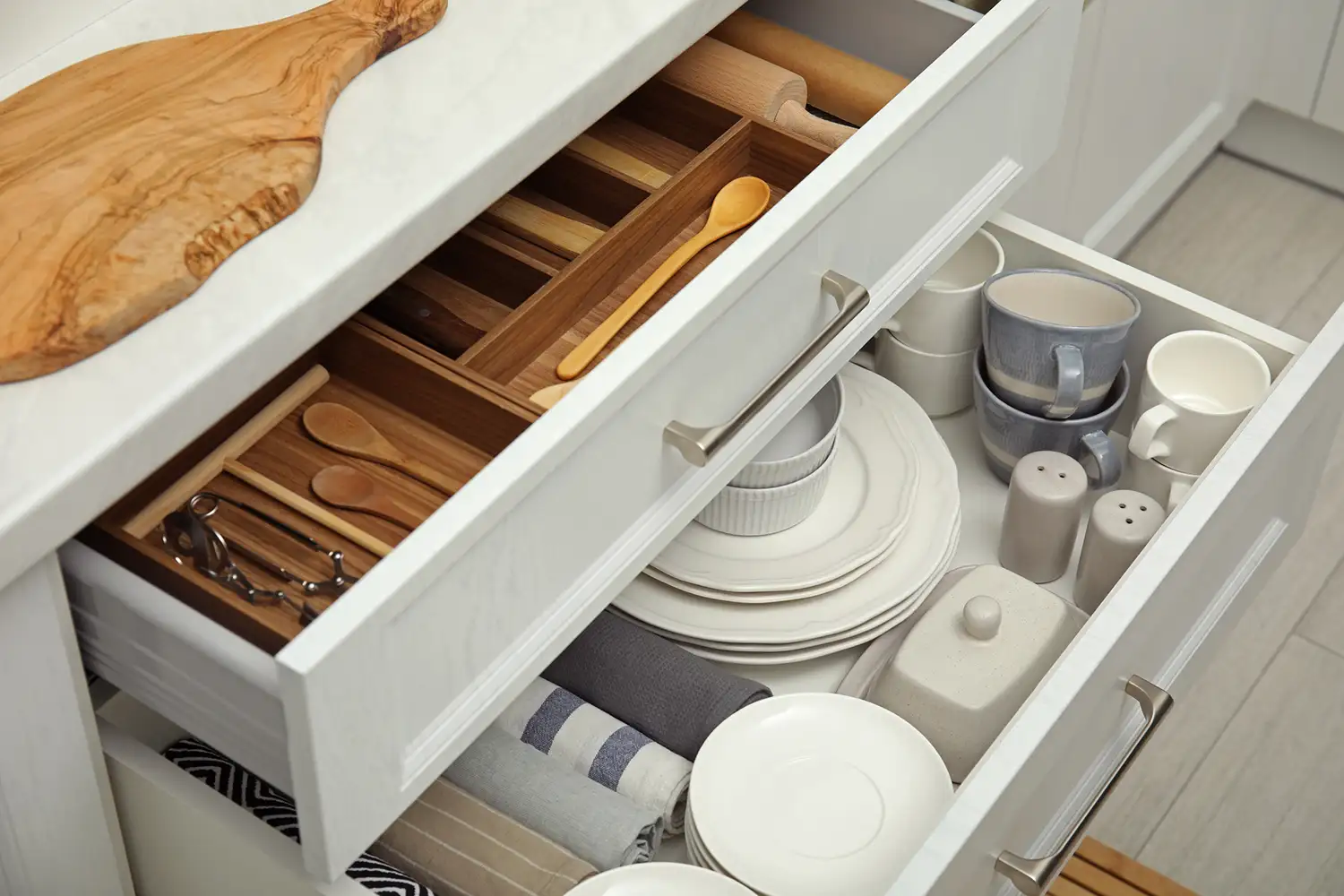
The kitchen is the most frequently used room in most homes. It’s also likely one of the most unorganized! Add ADHD into the equation and it becomes even more imperative that the space is organized in a way that allows you to be the most successful and use it most effectively. Today I want to provide as many tips as I can for how to best organize a kitchen if you are someone with ADHD.
I have ADHD; what is the first step to getting my kitchen organized?
As it usually is when it comes to organization, the first step is to declutter the space! If you have ADHD, you will be most effective if you start small – go one drawer or cabinet at a time. Don’t try to do all the spaces at once, and limit yourself to not starting a new drawer or cabinet until the current one is completed.
To most efficiently declutter, take everything out. Then, make piles for items to keep, items to donate, and items to throw away. Items to purge and remove would be anything you have duplicates of or items that are broken/no longer working or useful to you. Because this is the kitchen, you’ll also want to check expiration dates when decluttering the pantry/cabinets/refrigerator. For food items, anything expired can be donated or thrown away.
Once you’ve decluttered the kitchen entirely you will start the reorganization process with everything that remains. Look at what you’ve decided to keep and make groups of like items to be stored together.
What are the best types of storage containers to use in the kitchen? Will labels further help me organize for my ADHD?
To put your kitchen “back together” you should now determine the best way to store these like items. Using containers and bins without lids means less maintenance and it will provide easier access. We also recommend clear containers so that you can see everything you have in each one easily.
Not only are clear, lid-free containers going to work best for someone with ADHD, but the addition of labels is also important. Create easy-to-read labels to make identifying what you’ll need as quick as possible. Make your labels specific so you know exactly what is in each container and to make life easier when it’s time to return items to their “assigned home”. Labeling the tops of your drawers (on the inside) and the edges of cabinet shelves will further help you identify where items should be placed inside of each.
What is the best way to organize kitchen cabinets & drawers for ADHD?
It will help you stay more organized if you designate areas or zones for specific uses in your kitchen. For those with ADHD, this “zoning” will help you stay on top of the organization and make using the space more efficient. For example, create a “Cooking Zone”; choose an area closest to the stove and put all your pots and pans in the cabinets there. Place the cooking utensils in a nearby drawer. If you have an additional drawer in this space, you can use it for oven mitts and trivets.
Other zones that make sense when organizing a kitchen are a “Food Prep” and “Baking” zone. In the space, you imagine you’ll prep food in, store items such as cutting boards and reusable containers in the cabinets. Place the knives you use for food prep in the closest drawer. For a baking zone, you may want to have all supplies such as muffin pans, baking sheets, mixing bowls, etc. in the cabinetry and items such as spatulas, whisks, decorating utensils, etc. in the nearby drawers.
When reorganizing your cabinets and drawers to create zones, don’t forget to utilize vertical space! If possible, add extra shelves to the cabinets to maximize the interior storage. You may also be able to add hooks for mugs or storage racks for pot lids on the insides of the cabinet doors if your kitchen lacks storage space.
Where should items I use most often be placed?
Keep the items you use the most at eye level to reduce having to search for those items regularly. Consider adding pull-out shelves or open baskets (with no lids) to your deeper cabinets to avoid important items being lost to the back of your cabinets. In a central area of the kitchen, have a “daily use” drawer and cabinet where items you use every day (such as silverware and plates/bowls) are stored.
What is the best method for maintaining the space once it’s been organized?
Routine is important for everyone, but especially those with ADHD. Establish a routine and stick to it! Doing maintenance tasks at the same time of day every day will help you get in the habit of doing these tasks and will eventually make it easier for you to remember to complete them. Set timers for yourself so that you aren’t spending too much time on one task. Using a timer will also allow you to focus on the task at hand for the assigned duration of time.
Pay attention to anything that is not working as well as you imagined it would. Your system might need slight adjustments as time goes on and you learn more about what works best for YOU. If you initially set up one of your zones in a cabinet/drawer to your right, but always feel yourself naturally turning to the left when working in that space, don’t be afraid to adjust things a bit by switching the location of the zones! In the beginning, worry less about what is “pretty” or what you see on Pinterest and focus more on what is realistic and functional. “Pretty” can come AFTER you’ve established the right processes.
How do I prevent clutter buildup?
To help maintain your newly organized kitchen and prevent the clutter from reappearing set a rule for yourself that if you purchase a new item or kitchen gadget, then you need to get rid of an older one. Only allow yourself a specific number of items to help keep yourself accountable. For example, maybe you limit yourself to only owning six mugs and two spatulas of a specific size at any given time. By establishing these numbers now, it will help you avoid impulsively purchasing duplicate items you don’t truly need in the future.
Organizing a kitchen can be a daunting task for anyone, but the additional care needed to make it effectively work with your ADHD may understandably create more challenges or hesitation. If the tips I’ve given here aren’t enough to give you the confidence or if it’s as simple as you wanting an extra “push” to get started, please reach out! Shoot us an email at info@sortedout.com and we’ll connect you with a Sorted Out® specialist that can best meet your specific kitchen organization needs.
Looking forward to hearing from you,
Tonia
Request a Consultation
There are so many ways that organization can help take back a space that is overwhelming and bring it to functional! We are excited to help start your journey to an organized and productive space.
